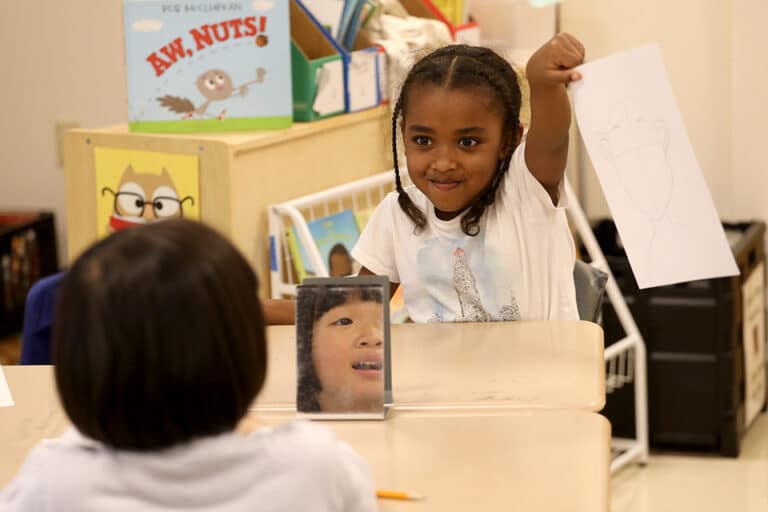Seventh Grade Math Has No Problem With Problem Sets
It is late October and the seventh grade students are engaged in the creativity, wonder, and fun of mathematics. In addition to the curriculum in the workbooks, students are given a sheet of mathematical problems–a problem set or Math’s Mate. The students eagerly work at the edge of their mathematical understanding and regularly go to the board to share how they approached a problem and to describe the stumbling blocks they may have encountered along the way.
The shares are filled not only with the students’ mathematical strategies and computations, but also with a lot of laughs, student-led learning, and peer support. The students not presenting ask helpful questions, offer their alternative strategies and unique perspectives, and often commiserate with the presenter that they ran into the same (or different) challenges for a problem. Student-led discussions in the math classroom build a culture where students feel ownership of the definitions and formulas they are developing, and the mistakes and struggles they encounter along the way are valued and discussed openly. Whether working on sets or working through the curriculum, students build confidence and learn the importance and power of community, empathy, and good humor.
– Sarah Pikcilingis, seventh grade math teacher
First Graders’ First Book Is All About … First Graders!
First graders have been working on their first book project of the school year, All About Me. First grade writers have brainstormed, planned, and written about parts of their identity to include in the pages of their books. They spent time revising and editing their books independently, and with teachers and partners. This week marked the beginning of first graders working on their book covers. Students will sketch a self-portrait to start, then add more personal details such as skin color, facial features, hair, and clothing. Self-portraits will serve as the cover of their All About Me book when they publish!
– Geoffrey Fox, first grade teacher
Sixth Grade Examines Social Structures in Ancient Civilizations
In sixth grade social studies, students have just started their second unit of the year, origins of society. They have been exploring the elements that bind societies together by examining the social structures of Mesopotamia, Ancient Egypt, the Shang Dynasty in Ancient China, and the Indus River Valley.
For this lesson, each student was assigned one of four roles: builder, farmer, trader, or leader. In the first activity, students were grouped based on their assigned role (all builders, all farmers, etc.) to learn how their specific role in any civilization depended on nearby rivers. This helped them understand the different ways early societies relied on river systems.
After this, students were reorganized into groups based on their assigned civilization. Each civilization group included one member from each role. In these groups, they discussed how each role depended on their civilization’s specific rivers, like the Tigris and Euphrates in Mesopotamia.
As part of the lesson, students also learned how to write thesis statements. Their speeches had to begin with a well-edited thesis statement that clearly presented their group’s argument. Together, they completed a RAFT assignment (Role, Audience, Format, Topic), writing a speech from each role’s perspective to argue the importance of staying close to the river. Their speech was color-coded by role, and they delivered it collaboratively as a group.
– Khang Phan, sixth grade social studies teacher








